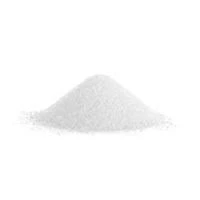
412 food additive
Understanding Food Additives The Case of E412
Food additives play a critical role in the modern food industry, enhancing not only the shelf life of products but also their taste, texture, and appearance. One such additive, known as E412 or guar gum, has gained significant attention due to its diverse applications and health implications.
Guar gum is derived from the seeds of the guar bean, a plant native to the Indian subcontinent. This natural thickening agent belongs to a class of substances called polysaccharides, which are carbohydrates made up of multiple sugar molecules. The unique structure of guar gum allows it to absorb water and swell, leading to its widespread use in various food products, including sauces, dressings, and baked goods. It is renowned for its ability to improve the texture and viscosity of these items, creating a more palatable experience for consumers.
One of the most appealing aspects of E412 is its functionality in reducing the calorie count of certain foods. By replacing fats or sugars in formulations, guar gum can create a creamy mouthfeel without the added calories, appealing to health-conscious individuals. Moreover, it has been employed in gluten-free products to mimic the elasticity that gluten provides in traditional baking, thus catering to a growing market of gluten-sensitive consumers.
Despite its advantages, the inclusion of E412 in food raises questions about its health effects. While guar gum is deemed safe for consumption by food safety authorities, some individuals may experience gastrointestinal discomfort, particularly if consumed in large quantities. Symptoms can include bloating, gas, and diarrhea. Therefore, it is essential for manufacturers to label products containing guar gum accurately and for consumers to be aware of their own tolerance levels.
412 food additive

In addition to its culinary applications, guar gum is used in other industries, including cosmetics, pharmaceuticals, and paper manufacturing. Its thickening and stabilizing properties make it valuable in creams, lotions, and even certain medications. The versatility of this additive highlights its importance beyond just the food sector, confirming its status as a multifunctional ingredient.
When it comes to sustainability, guar beans are considered more environmentally friendly compared to other sources of food additives. They require less water and can be grown in arid regions, making them a viable crop option in areas where other agricultural practices may fail. This resilience in various environmental conditions is a boon for farmers and contributes to a more sustainable production cycle.
The acceptance of food additives like E412 often reflects broader trends in consumer preferences. As awareness of food ingredients increases, many consumers are seeking natural additives over synthetic ones. Guar gum fits this narrative well as a natural thickener that can meet the demand for clean-label products. However, it is crucial for consumers to remain informed about the benefits and potential side effects associated with food additives, making educated choices based on personal health needs and dietary preferences.
In conclusion, E412, or guar gum, is an essential food additive that plays a multifunctional role in enhancing food products. While it offers significant benefits in terms of texture, calorie reduction, and versatility across various industries, awareness of its health effects and appropriate usage levels is vital. As the food industry continues to evolve, understanding the role of such additives will empower consumers to make informed decisions while enjoying a diverse range of food products. Guar gum exemplifies how nature can contribute to modern convenience, health, and sustainability, providing a bridge between tradition and innovation in our culinary landscape.
-
Buy High-Quality Trichloroisocyanuric Acid for Sale | TCCA 90% SupplierNewsAug.30,2025
-
Pure Sodium Dichloroisocyanurate Dihydrate | Powerful DisinfectantNewsAug.29,2025
-
Industrial Chemicals: Quality & Purity for Every IndustryNewsAug.28,2025
-
Nitrile Rubber Honoring Strict Production StandardsNewsAug.22,2025
-
Aspartame Ingredients Honoring Food Safety ValuesNewsAug.22,2025
-
Fertilizer for Balanced Plant NutritionNewsAug.22,2025
-
Cyanide Gold Processing with High Purity AdditivesNewsAug.22,2025
Hebei Tenger Chemical Technology Co., Ltd. focuses on the chemical industry and is committed to the export service of chemical raw materials.
-

view more DiethanolisopropanolamineIn the ever-growing field of chemical solutions, diethanolisopropanolamine (DEIPA) stands out as a versatile and important compound. Due to its unique chemical structure and properties, DEIPA is of interest to various industries including construction, personal care, and agriculture. -

view more TriisopropanolamineTriisopropanolamine (TIPA) alkanol amine substance, is a kind of alcohol amine compound with amino and alcohol hydroxyl, and because of its molecules contains both amino and hydroxyl. -

view more Tetramethyl Thiuram DisulfideTetramethyl thiuram disulfide, also known as TMTD, is a white to light-yellow powder with a distinct sulfur-like odor. It is soluble in organic solvents such as benzene, acetone, and ethyl acetate, making it highly versatile for use in different formulations. TMTD is known for its excellent vulcanization acceleration properties, which makes it a key ingredient in the production of rubber products. Additionally, it acts as an effective fungicide and bactericide, making it valuable in agricultural applications. Its high purity and stability ensure consistent performance, making it a preferred choice for manufacturers across various industries.





